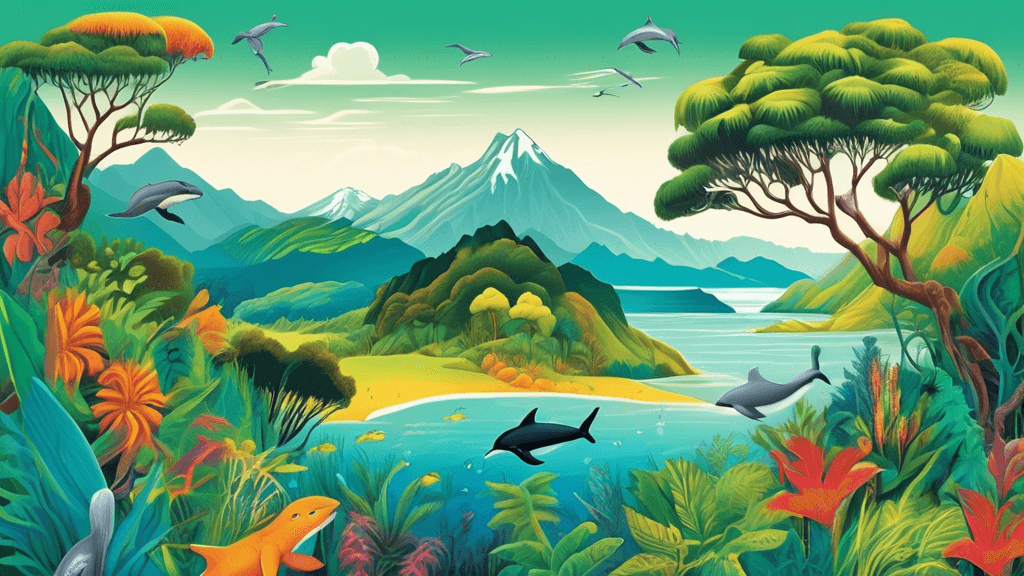
Exploring the Diverse Ecosystems of New In Zealand
Share
Discovering the Richness of New Zealand's Ecosystems
Why does New Zealand's natural beauty continue to captivate and inspire both visitors and environmental scientists alike? Nestled in the southwestern Pacific Ocean, New Zealand boasts a striking array of ecosystems, each brimming with unique flora and fauna. From the lush, verdant forests to the rugged, arid plains, this island nation presents a microcosm of ecological diversity. In this blog, we will delve into the varied ecosystems of New Zealand, exploring the intricate balance of life that thrives in each and exploring what makes each area uniquely significant.
The Majestic Forests of New Zealand
Perhaps the most iconic of New Zealand's ecosystems, the forests are home to an array of species that do not exist anywhere else on Earth. The kauri forests of the North Island, characterized by the enormous and ancient kauri trees, offer a glimpse into the world as it once was. But what makes these forests truly unique? According to Dr. Margaret Stanley, an ecologist at the University of Auckland, “The kauri forests represent a living record of New Zealand's ecological history, housing species that are remnants of ancient Gondwanaland.
Notable Data:
- 80% of New Zealand's flora is endemic, found nowhere else in the world.
- Kauri trees can live for over 2,000 years and grow to over 50 meters in height.
The Dynamic Marine Reserves
Surrounding the islands, New Zealand's marine reserves offer another level of biodiversity. The waters are teeming with species ranging from the tiny plankton to the majestic whales. The reserves are not only crucial for conservational efforts but also play a significant role in the cultural identity of New Zealand, particularly for the Maori communities. The connection between our people and the ocean is profound. The marine reserves help protect this bond and the biodiversity that sustains it, explains Tara Hana, a Maori environmental researcher.
Alpine Landscapes and Glacial Features
Moving from the coast to the high peaks, New Zealand's alpine regions provide stark contrasts to its forested areas. These landscapes are shaped by the dramatic forces of glaciers which carve out valleys and fjords, leaving behind a scene that appears otherworldly. These cold environments support specially adapted plants and animals, evolved to thrive in harsh conditions. The famous kea, a species of alpine parrot, is known for its intelligence and curiosity, which it uses to navigate the challenging alpine terrain.
Relevant data:
- New Zealand's Southern Alps stretch over 3,000 kilometers.
- The kea has been observed using tools, showcasing its problem-solving abilities.
The Unique Challenges of Preservation
While New Zealand’s ecosystems are robust, they face significant threats from human activity and invasive species. Efforts to conserve these ecosystems are multifaceted, involving legal protection, community engagement, and active restoration projects. The battle against invasive species, such as the possum, is critical to preserving our native wildlife, notes Mark Godfrey, a conservation expert in Wellington.
Key Challenges:
- Predation by invasive species has led to the critical endangerment of several native species.
- Habitat destruction and climate change pose ongoing threats to ecosystem stability.
Conclusion: Why Preservation Matters
Why do these preservation efforts matter? The answer lies not only in the inherent value of these ecosystems but also in their global significance. New Zealand's biodiversity is a treasure that offers scientific, cultural, and ecological benefits that extend far beyond its shores. Preserving these ecosystems isn't just about protecting what's ours; it's about maintaining the health of our planet, concludes Dr. Stanley.
In essence, New Zealand's varied ecosystems are as diverse as they are beautiful, playing a crucial role in both local and global ecology. By understanding and supporting these environments, we can ensure that they continue to thrive for generations to come. Are you ready to become part of the effort to preserve one of the most unique ecological landscapes in the world?
Consider learning more about New Zealand's natural heritage, participating in local conservation initiatives, or supporting organizations that are working hard to protect these irreplaceable ecosystems. Your actions, no matter how small, can make a big difference.





